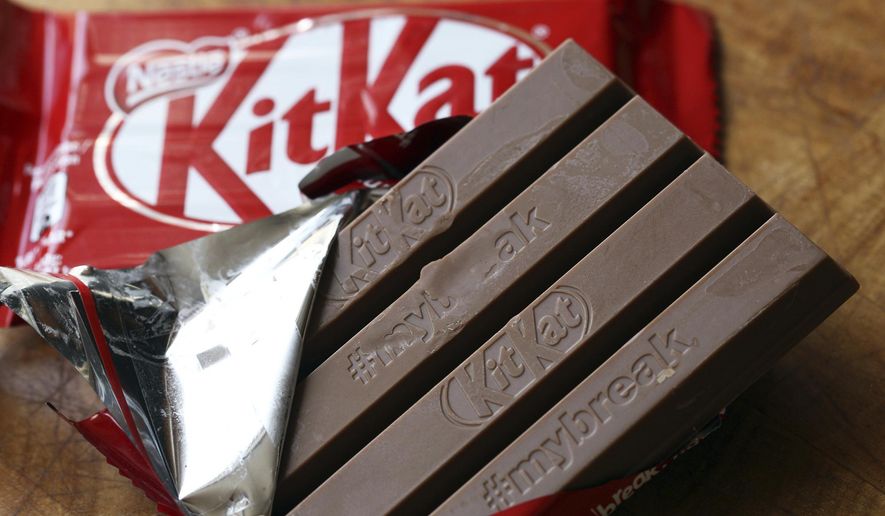STAVANGER, Norway (AP) - KitKat is not getting its break.
The maker of the chocolate bar has for 16 years tried to trademark its four-finger shape in the European Union, arguing that it is a distinctive feature that deserves protection - like Toblerone’s pyramid blocks, which are trademarked.
But a European court ruled Wednesday against KitKat and its maker, Nestle, saying that its shape is not recognized throughout all the 28 countries of the EU.
The court instead sided with the makers of Kvikk Lunsj, a Norwegian snack that is a longtime favorite of hikers and skiers - and is shaped almost exactly the same as a KitKat.
That decision will allow Mondelez, the maker of Kvikk Lunsj, to market and sell the chocolate bar more widely throughout the bloc.
The court is the latest battleground in the feud between the chocolate bars, which began when the company Freia first introduced the Kvikk Lunsj - which translates to “Quick Lunch” - to Norwegians in 1937, two years after KitKat hit U.K. shelves.
Their battle intensified in 2006 when Nestle secured a trademark for KitKat’s shape, only to be challenged by Kvikk Lunsj maker Cadbury, now owned by Mondelez.
In 2016, Nestle was stripped of the trademark since the shape of the treat was not considered recognizable throughout the EU.
The manufacturer appealed the decision in the bloc’s highest court, which ruled Wednesday that though the shape was viewed as distinctively KitKat in many EU countries, consumers in Belgium, Ireland, Greece and Portugal did not recognize it. Norway is not part of the EU, but adopts many of the bloc’s rules.
Nestle pledged to keeping fighting to secure the trademark and will ask the appeals board to re-examine the evidence.
It’s not the first time a chocolate maker failed to trademark a shape. Switzerland’s Lindt & Spruengli wanted to protect the form of its chocolate Easter rabbits covered in gold foil, with a red ribbon. But its case was also thrown out, in 2012, for similar reasons.
In the United States, Hershey has a trademark registration for the shape of Kisses chocolates, Mondelez has one for Toblerone and General Mills has one for the cone-shaped Bugles snacks.
Josh Gerben, a trademark attorney in Washington D.C., said companies need to show that a shape is distinctive enough to get a trademark approval, and that the shape is not merely functional.
“They want to make sure they’re not giving a monopoly to a company for a shape that is needed to make a product,” Gerben says. “For example, a circle for a cracker couldn’t be trademarked.”
When trademarks are granted, Gerben noted it’s likely for use within a specific industry. For instance, a court recently ruled against Coca-Cola’s claim over use of the word “zero” for diet drinks with no calories, such as Coke Zero.
Had Coca-Cola prevailed, Gerben said it would have simply prevented other soda makers from using the word in the same way. Coca-Cola has since rebranded Coke Zero as Coke Zero Sugar.
___
AP Business Writer Candice Choi in New York contributed to this report.




Please read our comment policy before commenting.